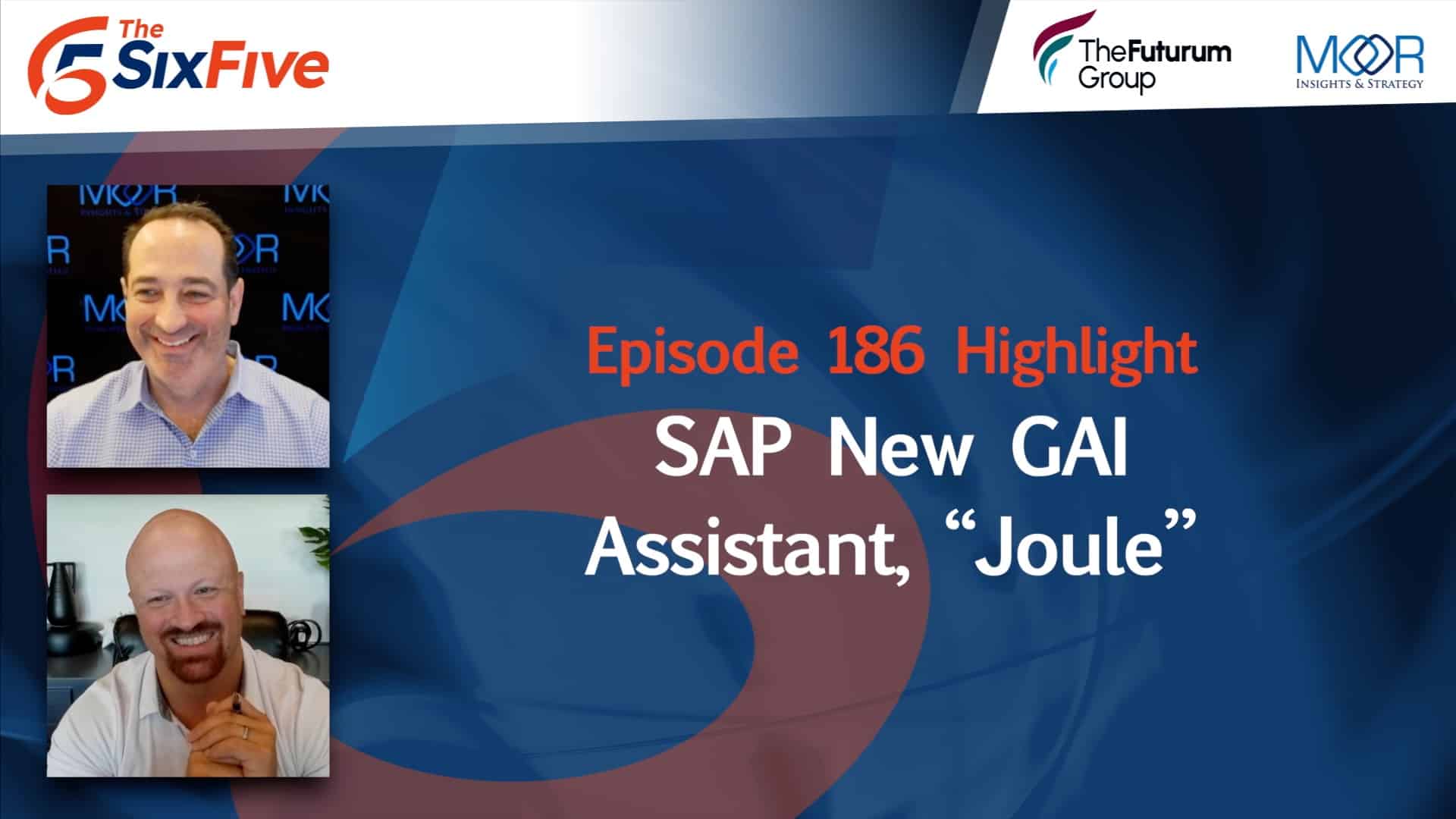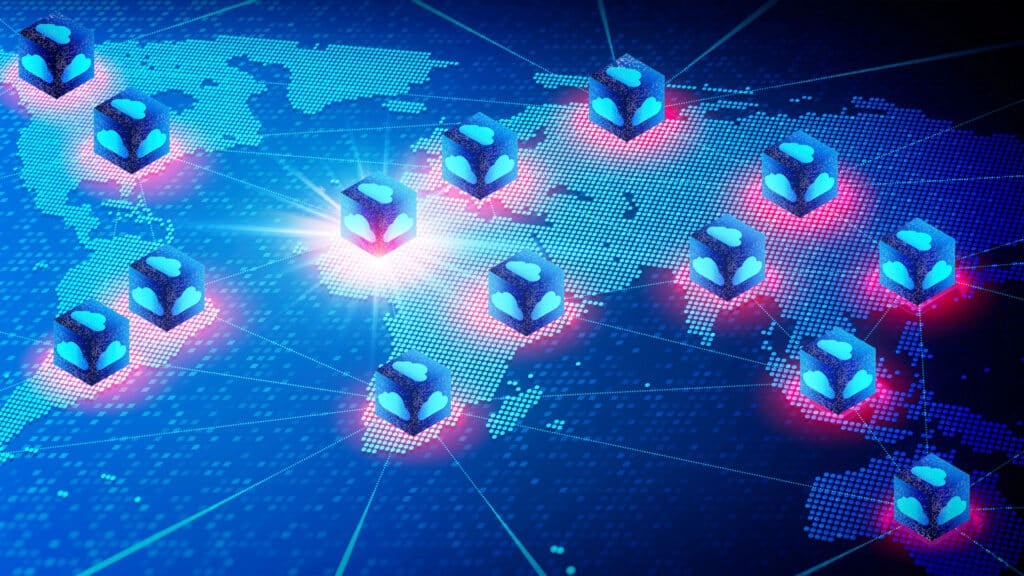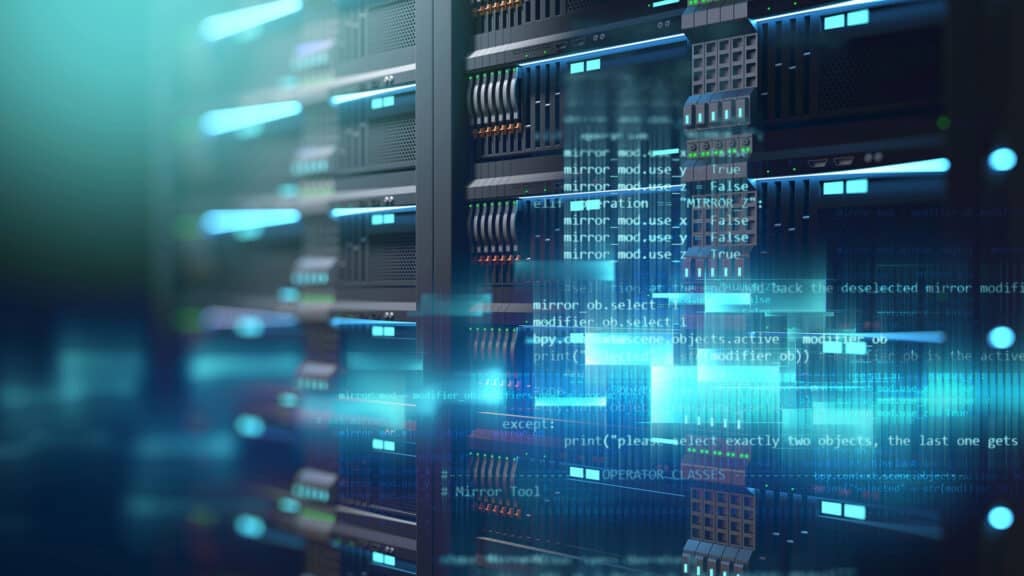The Six Five Team discusses SAP New GAI Assistant, “Joule.”
If you are interested in watching the full episode you can check it out here.
Disclaimer: The Six Five Webcast is for information and entertainment purposes only. Over the course of this webcast, we may talk about companies that are publicly traded and we may even reference that fact and their equity share price, but please do not take anything that we say as a recommendation about what you should do with your investment dollars. We are not investment advisors and we ask that you do not treat us as such.
Transcript:
Patrick Moorhead: The first topic, and this is SAP on the generative AI bandwagon with an assistant called Joule. What’s happening here, Daniel?
Daniel Newman: It is Joule, right?
Patrick Moorhead: Yes. Like the unit of energy, Joule.
Daniel Newman: Yeah. No, no, but with it being a European German company, it’s like I hope I’m pronouncing that correctly.
Patrick Moorhead: They’re a global company.
Daniel Newman: 300 million enterprise users. 300 million enterprise users are leveraging SAP solutions. Look, we’re going to talk a lot about generative AI this week because what else is there to talk about? But we’ve been waiting through this motion of what is every company going to be doing? And of course, with BTP and SAP in the cloud, we had no doubt that SAP intends and it actually has announced partnerships with the likes of Microsoft and Google and others. It’s very much building a ecosystem friendly approach to enabling generative AI. But when you have that much data, that much capability, and you’re that critical to running an enterprise’s application, having your own digital assistant leveraging the power of generative AI is going to be a thing that is going to be required. And it’s a thing that SAP needs to have embedded into its platform. So what has it done? Well, it’s done just that.
And this week I had a wonderful opportunity, I think you’ve had it in the past, to sit down with the CEO, Christian Klein to talk a little bit about the company’s strategy. And the company’s going through a pretty massive transformation right now. AI is putting this company at this inflection where many of its users… And this is something a lot of people might be aware of but don’t really know is SAP has done a really nice job of moving companies to the cloud, but it still has a humongous set of its customers on-prem. So we’re kind of talking Joule, I’m kind of talking cloud migration, and I’m kind of talking AI all at once. But again, this is not a news show, people. So if you’re waiting to read the news, you can read the link below. I’m going to give you some analysis here.
SAP needs to move its customers to the cloud or it needs to have its customers running its applications in the cloud, and here’s why. In order to get the best functionality and features in the generative AI era, companies are going to increasingly make it a priority to develop the continuous improvement of applications to be run in a continuously updateable manageable sandbox. Well, guess what? Having your highly customized code on-prem is going to be impossible for enterprises to successfully leverage the benefits of AI. And this is a lot to do with what I was talking with Christian about, but this is also what Joule is all about. Joule for a company to get the benefit, whether you’re running a finance ERP tool or an HR application, will not be able to be continuously upgraded to give optimum performance and capabilities to its customers if it’s asked to be custom coded into every different variant and iteration of SAP.
So right now, I mean, because you’re not only talking about SAP’s ERP, you’re talking about success factors, you’re talking about Ariba, we’re talking about procurement, we’re talking about HR, we’re talking about ERP, we’re talking about CRM, and marketing tools. So this is a transformational moment where we’re moving from a conceptual hype to enterprise wide deployment, and you have so much valuable data sitting inside your SAP instance, we need to get the most out of it. So this is where Joule being embedded across the SAP ecosystem is going to be important. And it’s also going to be important for the company to make sure that it wins the battle to this cloud transformation and doesn’t attract… Let’s say third party companies that are saying, we can overlay enterprise-wide workflow capabilities that can then be managed using a generative AI tool and you can leave your hardware on-prem.
It won’t work as well. People will try it. But you can be sure that this is where Joule is going to end up winning out. Now, of course, you need to be able to see these reports, the flexibilities, the capabilities. It needs to be very natural language, it needs to be easy to use, it needs to be central to the business’s performance because here’s the one thing every one of these companies in this space, whether it’s Salesforce, Microsoft, SAP need to be thinking about… And Pat, stick with me here just one more second.
Patrick Moorhead: I’m with you buddy.
Daniel Newman: I know, but I want you to know I’m feeling it today.
Patrick Moorhead: I can tell.
Daniel Newman: There will be a reckoning in the fact that not every single application in your enterprise can have its own digital assistant. Meaning at some point we’re going to want the digital assistant of digital assistants. And so we’re going to have some competition across the cloud, SaaS, ERP, productivity, collaboration. Where do we actually engage gen AI? Who’s going to be the leader and then who are going to be the secondary robots that are going to play fetch? Like the pooches we started talking about that are going to get all that data and bring it back to us in one centralized environment? So Pat, I think it’s a good move.\, It’s on the right track, this cloud migration is very important. I think SAP is doing what it has to do, but it has to migrate its customers. It has to win that frontline of being the source of truth and generative truth. And that’s what I think SAP is setting out to do.
Patrick Moorhead: Yeah. So this generative AI launch from SAP really closes the circle of enterprise generative AI, right? You saw the IaaS folks come out and then… Which if you want to do your own applications around that, you can. And then we saw the front end of the office with folks like Salesforce, and now we’ve got the back end of the office, the HCM, HRM, SCM, ERP, and NCX are coming full circle here. And it is interesting, Daniel, to your point, if the need for a uniform or a unified one generative AI bot, right? There’s two ways to get there. The first way you can get there is to go all in on an end-to-end, a NetSuite or an Oracle Fusion. The other way, obviously, is through APIs and custom data integration where you can train a lot of these bots if they have the data to have that come back.
We’ve always fantasized about a single pane of glass to manage IT, but there’s never in the history of glass that there’s been a single pane of glass. It’s really about reducing those panes of glass. So I do think the reality is we are going to have multiple chatbots out there for certain… And like we’ve seen in IS, you have your primary and then you have your secondary stuff. To your comment about the cloud, a hundred percent agree with you. SAP customers need to get there. And I think SAP has been one of the most patient companies when it comes to old style IT and supporting that. I think Christian said he’s going to let no customer behind, which I admire. I also know the reality of product development. And this hearkens back to Windows probably a decade ago when Microsoft was spending over 50% of its R&D on stuff like drivers, right? For old hardware.
And Apple, right? Was pretty much abandoning customers left and right on the MAC platform to get to, I’ll call it common core, okay? SAP has a common core too. And even if it’s common core, doesn’t mean it’s one way of doing IT, right? There’s three to four different flavors of SAP common core that a lot of its customers can. SAP needs to very quickly move off of customers who quite frankly are holding the rest of the pack behind. We saw this with Oracle and Oracle’s on-prem apps, Oracle app… Was it PeopleSoft was one of the big ones? And Oracle had to do a sharp right turn, and they acknowledged that they needed to get people onto a common core. Did they anger some customers? Absolutely. And I think SAP is going to have to bite the bullet and move this forward. It’s not just about SAP, but it’s about all of the rest of SAP customers that have moved the cloud.
I do also acknowledge the worst and first movers who moved via VMs. And these aren’t laggards, these are big companies who move stuff into IaaS that will need to figure out, because they’re not on common core, how to take advantage of this. But these are very sophisticated companies. They’ll grumble a little, but they’ll move forward. Now we’re going to hear more about that in October. SAP has multiple events. They’ve got Connect Live and they have Experience Live, and they have TechEd all throughout October and November. But it’s great to see in what I will call mission critical applications, whether your risk is very high that SAP is moving into this generative AI future. This isn’t their first launch, right? They did some announcements about their ecosystem, Western Europe’s Aleph Alpha, Anthropic, Cohere, and a lot of third party partnerships with Microsoft, Google Cloud, and IBM.
So this isn’t their first generative AI or AI announcement, but I think it is a big one.
Author Information
Daniel is the CEO of The Futurum Group. Living his life at the intersection of people and technology, Daniel works with the world’s largest technology brands exploring Digital Transformation and how it is influencing the enterprise.
From the leading edge of AI to global technology policy, Daniel makes the connections between business, people and tech that are required for companies to benefit most from their technology investments. Daniel is a top 5 globally ranked industry analyst and his ideas are regularly cited or shared in television appearances by CNBC, Bloomberg, Wall Street Journal and hundreds of other sites around the world.
A 7x Best-Selling Author including his most recent book “Human/Machine.” Daniel is also a Forbes and MarketWatch (Dow Jones) contributor.
An MBA and Former Graduate Adjunct Faculty, Daniel is an Austin Texas transplant after 40 years in Chicago. His speaking takes him around the world each year as he shares his vision of the role technology will play in our future.




